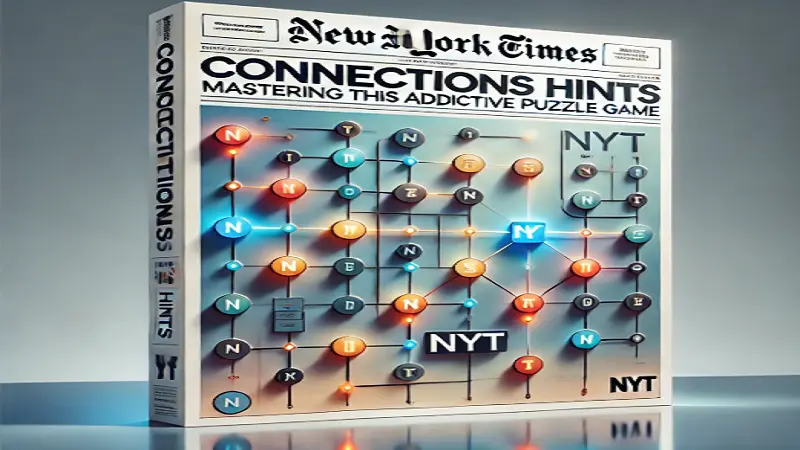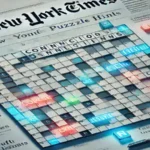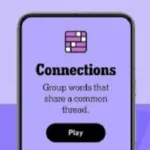The New York Times has a reputation for producing some of the most engaging puzzles on the planet. From the classic crossword to the addictive Spelling Bee, they have a knack for keeping minds sharp and engaged. Among their more recent and equally captivating offerings are connections hints nyt, a word puzzle that tests players’ abilities to group related words into categories. If you’re someone who’s hooked on this daily brain teaser or just curious about why it’s become a favorite for many, this article dives deep into what makes Connections so unique, along with helpful hints to improve your game.
What Is Connections?
At its core, Connections is a simple yet challenging game. Players are presented with a grid of 16 words. The goal is to group these words into four sets of four, based on their shared connections. The catch? Some words seem to fit multiple categories, making it a delightful exercise in lateral thinking.
The challenge lies not only in identifying the connections hints nyt but also in avoiding “decoy” words — terms that might seem like they belong in a group but don’t. This combination of logic, vocabulary, and pattern recognition is what makes Connections both enjoyable and addictive.
Why Connections Has Taken Off
Since its launch, Connections has gained a loyal following, much like the NYT Spelling Bee. Here’s why this game has resonated with so many players:
- Simplicity Meets Depth: The rules are straightforward, but the complexity of the word associations provides endless variety and challenge.
- Quick Play Sessions: Each puzzle can be solved in a matter of minutes, making it perfect for a quick mental workout during coffee breaks or commutes.
- Social Appeal: Sharing your daily progress with friends or discussing tricky groupings adds a communal aspect to the game.
- Expanding Vocabulary: For word enthusiasts, Connections offers an opportunity to explore language freshly and creatively.
Understanding the Types of Connections
The beauty of Connections lies in its diversity. Categories can range from the straightforward to the deeply abstract. Here are some common types of connections you might encounter:
- Synonyms or Antonyms: Words with similar or opposite meanings, like “Happy,” “Joyful,” “Sad,” and “Melancholy.”
- Themes or Categories: Sets based on shared themes, such as “Types of Flowers” or “Sports Teams.”
- Homophones or Wordplay: Words that sound alike but differ in meaning or spelling, such as “Knight” and “Night.”
- Hidden Relationships: Connections that require more lateral thinking, like a set of “Movie Villains” or “Words with Double Letters.”
Understanding these categories is key to spotting patterns and improving your chances of solving the puzzle.
Tips and Tricks for Solving Connections
If you’re looking to step up your connections hints nyt game, here are some tried-and-true strategies:
1. Scan for Obvious Groups First
Begin by identifying the easiest connections. Categories like colors, numbers, or animals often stand out and give you a solid starting point.
2. Focus on Unusual Words
Words that seem out of place in the grid are often a part of niche categories. Use them as anchors to identify less obvious groupings.
3. Think Laterally
Don’t always take words at face value. For instance, “Apple” could refer to the fruit, the tech company, or even a type of pie. Considering all possible meanings helps uncover hidden relationships.
4. Trial and Error
The game allows for some guesses before penalties kick in. Use these opportunities to test potential groupings without overthinking.
5. Avoid Common Decoys
Be wary of words that seem to fit multiple categories. For example, “Orange” might fit both “Colors” and “Fruits.” These decoys are designed to mislead you, so approach them with caution.
The Psychology Behind the Fun
Why do games like Connections Hints nyt become so addictive? It all boils down to the brain’s reward system. Each successful grouping triggers a sense of accomplishment, releasing dopamine and encouraging players to come back for more. Additionally, the mix of challenge and attainability keeps frustration levels low, making the experience more enjoyable than stressful.
Daily Routine for Puzzle Enthusiasts
For many, Connections has become a part of their daily routine, much like checking the news or sipping a morning coffee. Here’s how to make it a rewarding habit:
- Morning Brain Boost: Solve the day’s puzzle first thing in the morning to jumpstart your cognitive functions.
- Compete with Friends: Share scores and challenge friends to see who can solve it faster.
- Keep a Streak: Like the NYT Crossword, Connections rewards consistency. Keeping a streak alive can be a fun motivator.
How to Access Connections
You’ll need a subscription to the New York Times Games section to play Connections. The subscription grants you access to their full suite of puzzles, including crosswords, Spelling Bee, and more.
If you’re new to the platform, free trials are available, giving you a chance to explore before committing.
Why Connections Stands Out in a Crowded Market
The puzzle game market is saturated, yet connections hints nyt has carved a niche for itself. Its balance of challenge and creativity, coupled with the NYT brand’s credibility, ensures its appeal to both casual gamers and word enthusiasts.
Moreover, its integration with the broader NYT puzzle ecosystem makes it a seamless addition for existing subscribers.
Final Thoughts
connections hints nyt by the New York Times is more than just a game—it’s a daily mental workout, a vocabulary builder, and a source of pure fun. Whether you’re a seasoned puzzler or a newcomer looking for a fresh challenge, this game offers something for everyone.
So, the next time you find yourself scrolling through your phone or craving a quick mental escape, try Connections. Who knows? You might uncover connections you never knew you had.
Learn more Connection Hints


